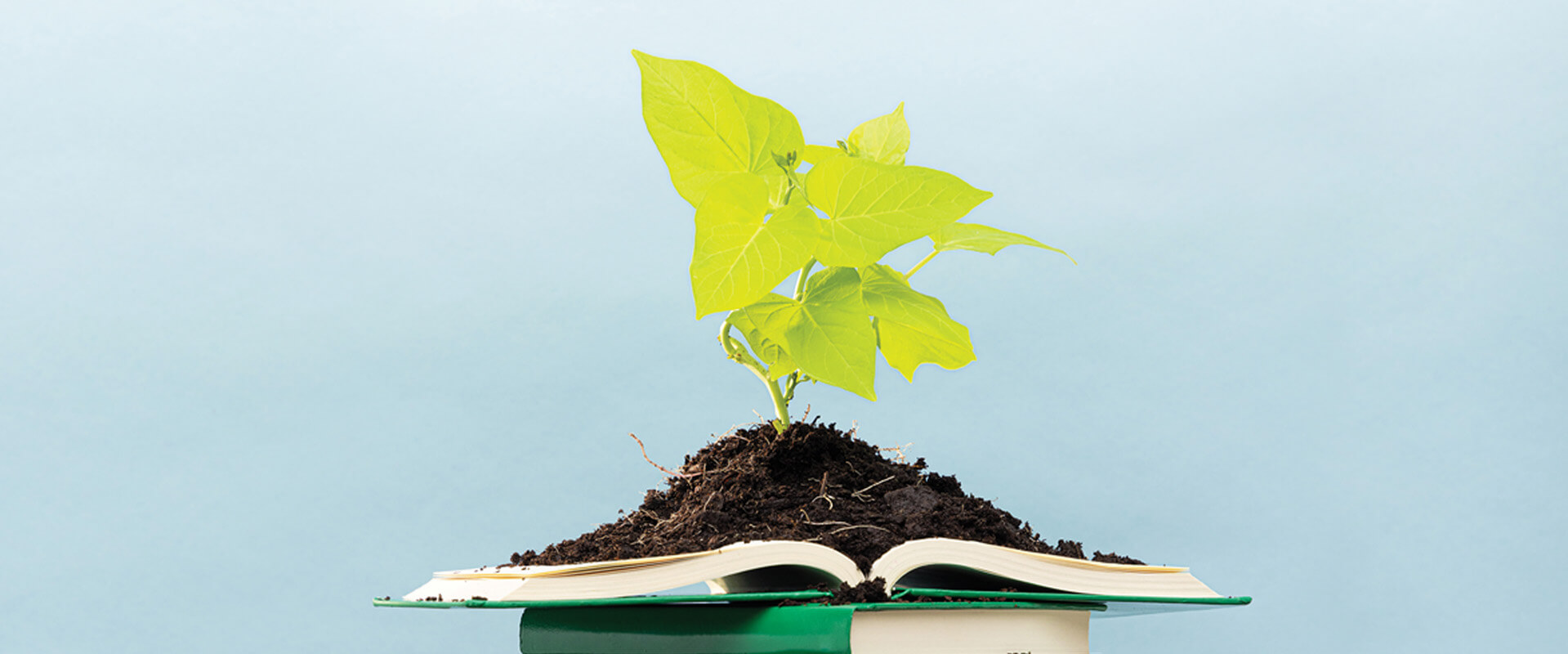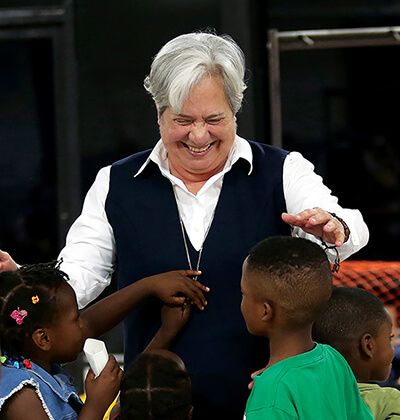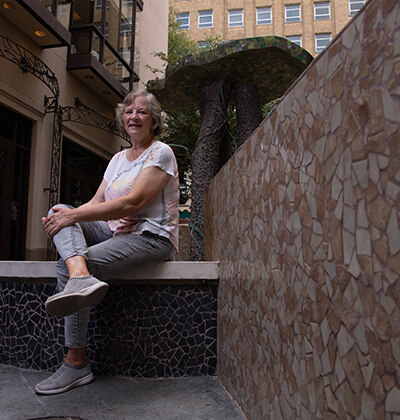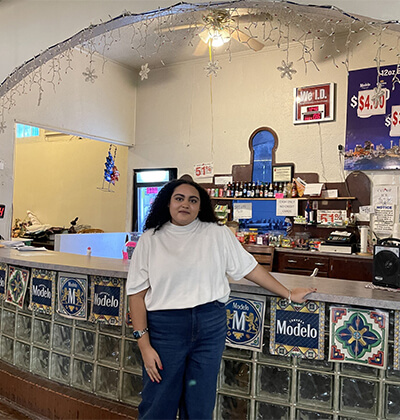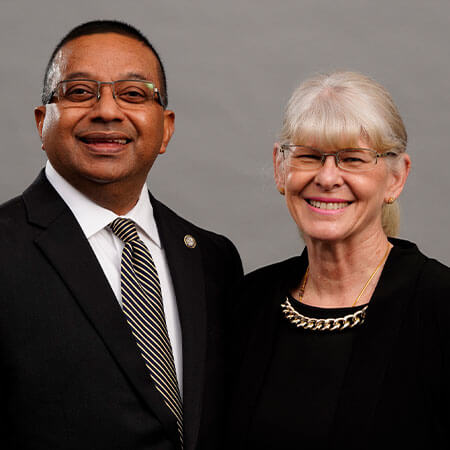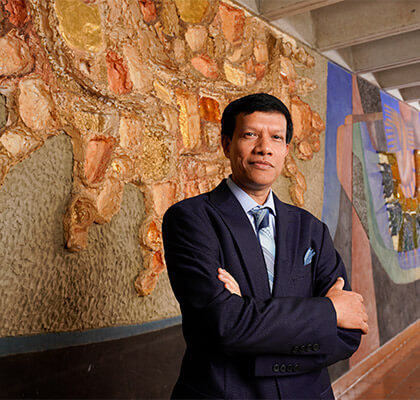Caring for our common home
by Nathaniel Miller
On Earth Day 2022, the sun dappled light through the swaying tree canopy, shading a crowd of St. Mary’s University faculty, staff and students … and a few eager ants.
While nature carried on indifferent to the day’s gathering, the human listeners settled in at the Quad Amphitheater to join the University’s inaugural Gold and Blue Go Green Earth Day event on April 22.
The celebration marked the first time much of the campus community would learn of the University’s seven-year commitment to “care for our common home,” in the words of Pope Francis.
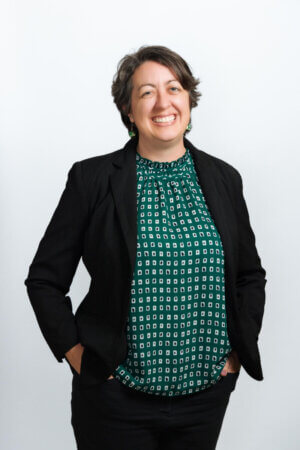
For the crowd of about 100, keynote speaker Vincent Miller, Ph.D., illuminated the importance of Pope Francis’ encyclical, Laudato Si’, on Care for Our Common Home, calling it a moral and intellectual document.
As the Gudolf Chair in Catholic Theology and Culture at Ohio’s University of Dayton, Miller talked about how Francis called for environmental action and for humankind to change its relationship with Earth.
For some, it may have seemed odd to address a religious document during Earth Day, but Laudato Si’ calls on Catholics, people of faith and institutions to see the moral and theological reasons for environmentalism.
St. Mary’s University’s leaders heard that call. The University became the first in Texas, among a global cohort, to join a seven-year action plan launched in November 2021. The University’s Laudato Si’ committee continues identifying ways to implement sustainability measures.
“As one of 133 universities around the world that have committed to Pope Francis’ seven-year journey toward integral ecology, we join his sacred call to be good stewards of nature and help heal the Earth,” said St. Mary’s University President Thomas M. Mengler, J.D.
Published in 2015, Laudato Si’, which translates to “praise be to you,” highlighted the climate change crisis and warned of “unprecedented destruction of ecosystems, with serious consequences for all of us” should we delay immediate action.
In the document, Francis avoids political debate, instead laying out seven areas of focus:
- Response to the cry of the Earth
- Response to the cry of the poor
- Ecological economics
- Adoption of sustainable lifestyles
- Ecological education
- Ecological spirituality
- Community resilience and empowerment
How to work and achieve goals in these areas is up to each individual and institution.
It’s not just the Vatican calling for change. In a 2022 report, the United Nations declared the Earth would be uninhabitable unless action is taken to not only limit global warming to 1.5 degrees Celsius annually, but to also reach net-zero carbon dioxide emissions by 2050.
During the Earth Day event at St. Mary’s, Miller quoted the Founder of the Marianist Order Blessed William Joseph Chaminade when he said, “no longer could nor would the old methods satisfactorily solve present problems.”
To reach short-term and long-term goals, the University is reviewing different approaches, while also embracing the spiritual side of Francis’ message — even beyond the seven-year initial framework.
“This is the St. Mary’s way of trying to respond to the Pope’s challenge for us to be not just individuals, but also to be an institution that supports being good stewards of our Earth so there will be a future generation of St. Mary’s students,” said the Rev. John Thompson, S.M., Ed.D., Vice President for Mission.
Adopting Campus Goals
Even before this latest commitment to ecological change, St. Mary’s University began taking steps to become more ecologically conscious.
Staff members have swapped light bulbs on campus for lower-energy options. They have adjusted weekend temperatures on thermostats to use less power. They’ve installed fillable water stations to reduce plastic bottle use with plans to add more across campus.
Students, faculty, staff and alumni volunteer in the community during the biannual Continuing the Heritage Day of Service. Continuing the Heritage, which celebrated its 25th anniversary in August, includes projects to clean and maintain green spaces and community gardens.

St. Mary’s also built a rainwater harvesting system between the Garni Science Hall and the Moody Life Sciences Center. The 5,050-gallon tank collects rainwater to irrigate nearby landscaping.
Future short-term goals include installing motion sensors to automatically shut off lights and phasing out single-use cups at campus dining facilities. Long-term goals include planting more trees and adding carports with solar panels to harvest energy.
Another goal is to add a second fair-trade sale in the spring semester in addition to the fall event. The fair-trade movement helps producers in developing countries work in safe conditions, improve their lives and earn money to invest in their communities.
The St. Mary’s Board of Trustees, looking to expand financial investments in socially responsible companies, approved the addition of an ESG fund, which stands for Environmental, Social and Governance, to its endowment. This allows for the reallocation of $3 million of existing funds to companies that practice environmental and social impacts on their business decisions.
Discussions will continue in Fall 2022 between Mengler, the Center for Catholic Studies and the newly created Laudato Si’ Action Plan Development Committee composed of faculty, staff, administrators and students. These discussions, taking feedback from the Earth Day event and the goals of Laudato Si’, will create a blueprint for years two through seven of the St. Mary’s commitment.
Associate Professor of Environmental Science David Turner, Ph.D., chair of the new committee, said the goal is to develop a roadmap identifying ways to advance each of the seven steps that are not just achievable, but also measurable.
“This long-term commitment is a key step in becoming a more sustainable University, something that I believe more and more students are looking for when deciding where to go to school,” Turner said.
Allison Gray, Ph.D., Interim Beirne Director for the Center of Catholic Studies and Associate Professor of Theology and Greek, will serve as an ex officio member on the committee. She hopes to present a plan by the end of the year.
“We are committed to having a plan to share with the University and the other Laudato Si’ universities by December 2022,” Gray said.
Evelynn Mitchell, Ph.D., Professor of Environmental Science, said St. Mary’s is off to a strong start, but more people will have to get involved to increase the impact.
Evelynn Michell, Ph.D., Professor of Environmental Science“We need to work together as a planet to minimize these impacts. Because if we keep burning fossil fuels as quickly as we can, we’re going to continue seeing these weather events increase.”
Without large, immediate change, she added, extreme weather will become more common. Think longer stretches of 100-degree weather or snowstorms like Winter Storm Uri in 2021, which killed hundreds in Texas.
“We need to work together as a planet to minimize these impacts,” Mitchell said. “Because if we keep burning fossil fuels as quickly as we can, we’re going to continue seeing these weather events increase.”
Andrew Brei, Ph.D., Associate Professor of Philosophy, who helped plan the Earth Day 2022 event, said it’s easy to get overwhelmed when first getting involved because the sense of urgency and the changes needed to reach each goal can seem like a massive undertaking.
However, he added, breaking down each goal and encouraging everyone to do their part makes the actions easier to digest and encourages people to get involved.
“There’s something really motivating and humbling about understanding your role and your contribution to a much larger situation,” Brei said.
Guiding Through Spirituality
According to the Book of Genesis — after the creation of Heaven, Earth and the animals — man was created and given dominion over the animals on land and sea.
Some have interpreted “dominion” as humanity exerting total control of the Earth. However, Pope Francis stated the relationship between man and Earth needs to be re-evaluated to see the seven goals as a theological undertaking.
Xavier Montecel, Ph.D., Assistant Professor of Catholic Theological and Social Ethics and a recent addition to St. Mary’s, said Francis called the relationship a stewardship, one in which humans and the Earth care for each other mutually as opposed to humans seeing the planet as full of infinite resources.
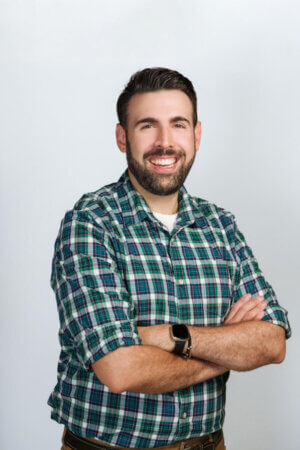
“The Earth cares for us,” Montecel said. “The Earth sustains us, and we sustain the Earth.”
In addition to Genesis, Montecel said examples of environmentalism can also be found in other books, such as Epistle to the Romans, the Book of Job and the Book of Isaiah. Agreeing with Montecel’s examples of environmentalism in the Bible, Thompson added people tend to focus more on God’s message about love and forgiveness while forgetting how pleased he was after creating the world.
“It’s always been part of our history, part of our culture and, particularly for Catholics, our starting point in theology,” Thompson said. “It’s always started with the good of creation.”
But even if someone agrees with the theological issues of environmentalism, changing how someone lives their life is not easy. Montecel said Laudato Si’ aims to put a human element to environmental issues.
Using the response to the cry of the poor as an example, Montecel said rising sea levels would cause lower-income people to suffer as they are less able to move out of unlivable areas.
Francis’ encyclical calls us to recognize the importance of environmental undertakings when practicing faith.
“Climate change is a moral crisis. It requires a moral response,” Montecel said. “That’s what Francis tries to communicate to us through his work.”
Empowering Students
Alvaro Garza loves the outdoors.
The sophomore Finance and Risk Management major said he grew up camping, hiking and fishing — hobbies he still enjoys when time permits. He feels at home in places like Canyon Lake, Government Canyon State Natural Area and Natural Bridge Caverns.
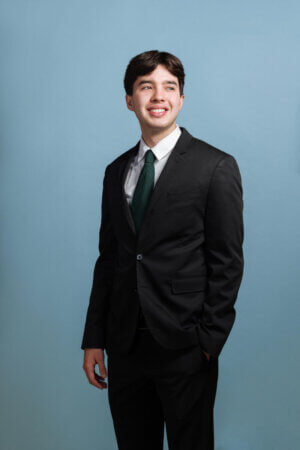
President of the Environment, Conservation and Outreach (ECO) Club and a speaker at the Earth Day event, Garza said if action is not taken to protect the planet, those areas he loves may not be around for future generations.
“This is something I care about,” he said. “I feel driven to improve the environment.”
For many, the seven-year journey is about keeping the planet habitable for future generations. But students also said the initiative brings them together as a community and will build something that will outlast them.
The success of the initiative will be shared between students committing to the seven-year pathway and University officials listening to feedback and pushing for meaningful alterations, both Thompson and Brei said.
Once the initial seven years have passed, it will be up to the University and its community to maintain those accomplishments. Environmental stewardship must continue to be on people’s minds.
“As an entire campus, we need to keep our feet to the fire,” Brei said. “Events like Earth Day are good because they are visible. But we have to keep it in front of people.”
During the Gold and Blue Go Green Earth Day kick-off event, students divided off into seven groups — one for each goal — to brainstorm ways to reach these goals.
Allison De La Houssaye, a senior Environmental Science major and a member of the ECO Club, wants to involve commuter students in campus-affiliated groups and events such as Earth Day. In her experience, she said, students who commute are less likely to get involved in campus-based activities, which she’d like to change.
De La Houssaye said she wants to see more students of other majors take environmental science courses to have a better understanding of the Earth and the importance of its ecosystems.
Alvaro Garza“This is something I care about. I feel driven to improve the environment.”
“We need to start by getting people to know there are so many things happening on campus and ways to be involved,” she said.
Kelsey Ann Chorath, a junior Mathematics major, said taking part in the University’s initiative allows her to be part of something bigger than herself.
Chorath does not know what success will look like. She envisions everything from a grove of new trees on campus to environmentally friendly technology in existing and future classrooms.
However that success takes shape, Chorath said she must try to help make Earth — and St. Mary’s — a better place.
“I’d like to be able to come back and look around and say, ‘I was able to help make that happen,’” she said.
Seven Pathways
In his encyclical Laudato Si’, On Care for Our Common Home, Pope Francis declared seven areas of focus in his call for environmental action to protect the Earth. Each goal can seem like a large undertaking, so no one person is expected to respond to every area. However, everyone is encouraged to do something.
Response to the cry of the Earth
Help the Earth by focusing on climate change, biodiversity loss and ecological sustainability. Actions include adopting and using renewable energy sources, such as wind and solar power; or finding ways to reduce your carbon footprint or trash production.
Response to the cry of the poor
Take care of the most vulnerable, such as indigenous communities, migrants and children at risk of slavery. Strive to view each other as equals, without national or social boundaries. Offer physical or monetary assistance as you are able.
Ecological economics
Acknowledge that the economy is not only part of human society, but also affects the planet. Actions include growing an edible garden, finding ways to offset fossil fuel use or participating in fair-trade markets.
Adoption of sustainable lifestyles
Adjust your life to promote sustainability and reasonable use of resources and energy. Actions include adopting more plant-based foods and reducing meat intake, using public transportation, walking, cycling and avoiding single-use items like plastic cups.
Ecological education
Urge institutions to rethink and redesign curricula to foster ecological awareness and transformative action. This area of focus pushes humans to rethink their relationship with the environment. Find ways to strive for an inclusive, quality education for all; achieve gender equality; and promote peaceful, inclusive societies.
Ecological spirituality
Transform hearts and minds toward discovering God in all things. Explore your contact with the natural world, and help develop ecological catechesis or retreats to share information about environmentalism.
Community resilience and empowerment
Engage in community dialogue. To become involved in the St. Mary’s effort, email Allison Gray, Ph.D.

